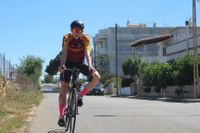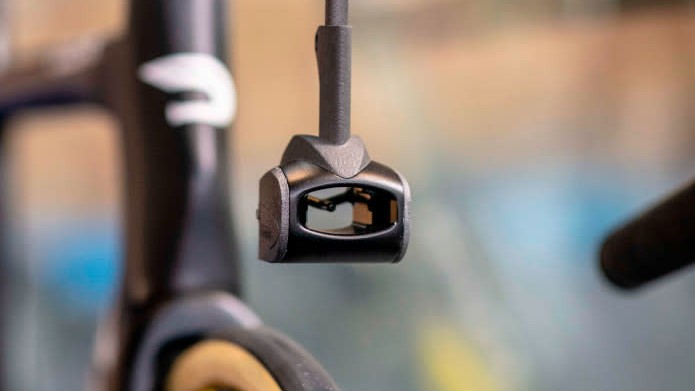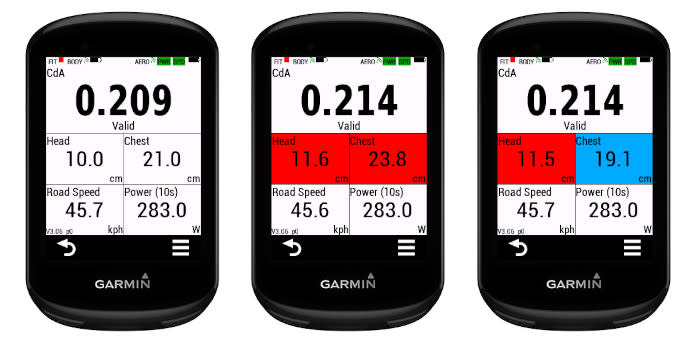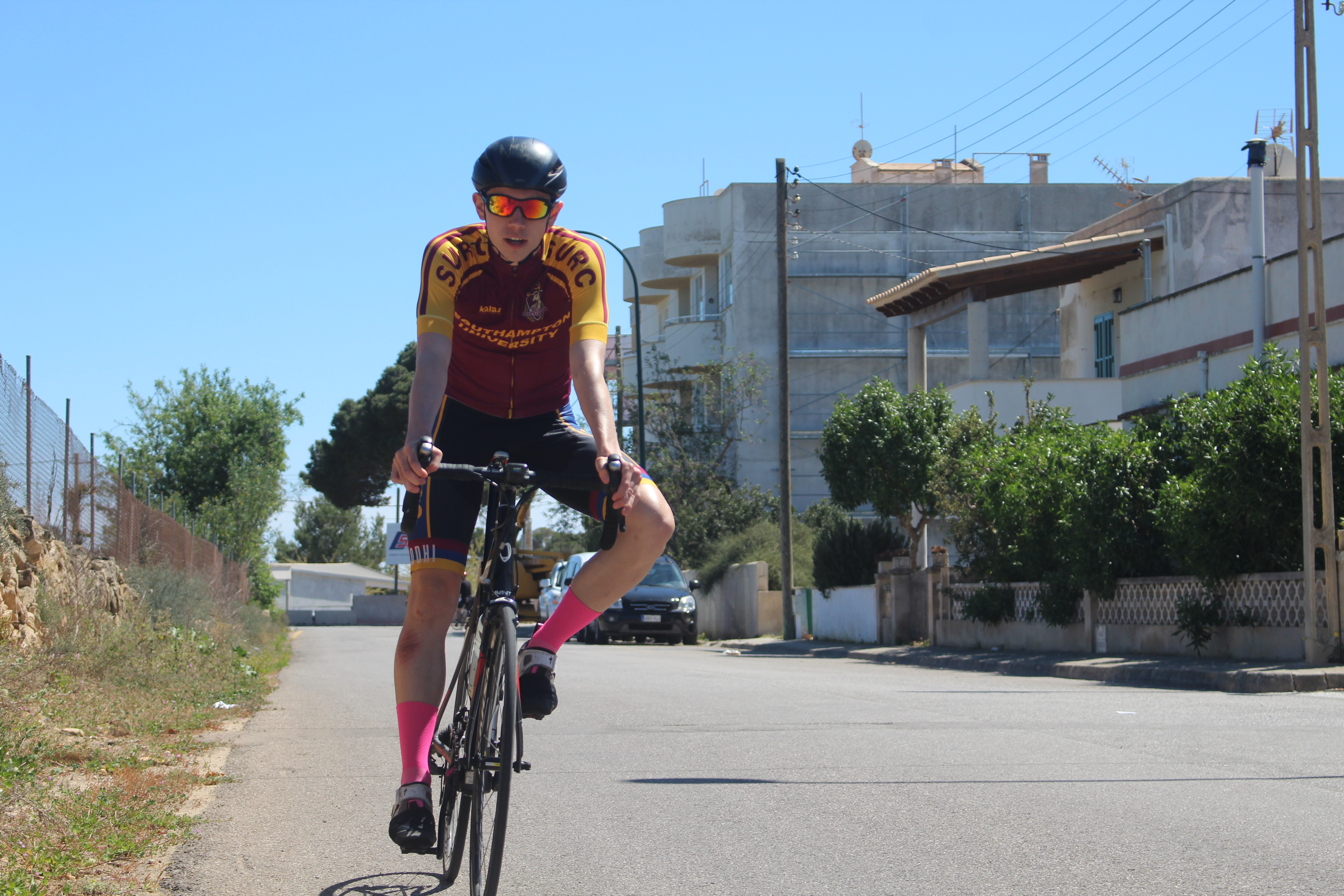Aerosensor: the most accurate (and cheapest) handlebar-mounted wind tunnel so far?
Former F1 engineer is crowdfunding a complete system for real-world aero testing that's due to launch next year


In recent months, there’s been something of an explosion in the amount of aero tech coming onto the market. This is due to a couple of factors which have created an aerodynamicist's perfect storm. Primarily, aero sensor quality has improved.
The general cycle of development is that physicists discover some useful fundamental property, they then find potential applications and send it to the engineers. These engineers then build something and send it to their friends in industry who will then miniaturise it.
This cycle repeats indefinitely and devices get smaller and smaller - which is the reason your phone can do so many interesting things that 20 years ago would have been unthinkable. A side product of this, is we can now get wind tunnel data from a small device which attaches to our handlebars - step in, Aerosensor.
The other reason for the increase in aero tech is that alongside this sensor quality improvement. cyclists have collectively realised they’re wasting a lot of energy on the wind, about 80% of everything they’re producing! Aerosensor, among others, are here to help us cheat this wind.
Who is Aerosensor?
Aerosensor was founded five years ago by former F1 engineer, Dr Barney Garrood, and after a four-year development cycle they’re just about ready to start production. A funding campaign has launched on Indiegogo which has raised about £25,000 so far, though even if their £45,000 target is not met the product will be produced anyway as Aerosensor has alternative forms of funding.
Chris Hoy is on board as an Aerosensor ambassador and there's already a video in which the six-time Olympic gold medallist explains the system and extols its virtues.
How much does Aerosensor cost?
The planned order shipment of the first units is early February 2023 and the vast majority of the product design process is complete. The full system is available to order for £844, currently discounted from the full price of £1,125. The full price for the Aerosensor on its own is £750.
The latest race content, interviews, features, reviews and expert buying guides, direct to your inbox!
By comparison, Notio sells the Aerometer for $599 on its website but we couldn't find it in the UK for less than £749 (apparently discounted from its RRP of £949).
Alongside the development cycle of Aerosensor, they’ve actually ended up with three products. The flagship Aerosensor CdA measurement device, Aerobody (a laser-guided body position sensor) and Aerodrome - a super-accurate lap timing sensor for aero testing.
Let's take a look at each one individually.
Aerosensor

Aerosensor, the product from the company also called Aerosensor, is a real-time drag measurement system. The aim for this product is to be an easier to use, more accurate Notio.
Aerosensor works differently to a Notio, however, with its patented probe design measuring air pressure at either side of the device. This, alongside the pitot tube situated at the back of the device, allows for accurate CdA to be measured, even at high yaw angles. This is important in cycling as we go slowly relative to the wind - a 12kph crosswind means more to a bike moving at 40kph than an F1 car moving at 260kph.
Aerosensor claims unprecedented accuracy, with its device being able to measure CdA to ±1.5%.

Currently the device is only compatible with Garmin bike computers and works via a Garmin CIQ app. In order to get good measurements you’ll need a dual-sided power meter and a speed sensor alongside your Aerosensor.
Aerosensor's graphic above shows how the devices are linked.
Aerobody

Aerobody is a laser-powered body measurement device which sits on the stem, pointing one beam at your head and another at your chest.
Bouncing light off something is a very accurate means of measuring (the speed of light is quite fixed unless you’re riding your bike at relativistic speeds) and as a result the Aerobody system can measure to within a millimetre.
The coolest thing about Aerobody is that you can use its measurements alongside CdA as a function of time - this means you can collect data across many time trials and training rides and figure out the best place to put your head. Then, once you have this, you can input this position into the Aerobody app and get live feedback on whether your head is too high, low or in the right place.
Aerodrome

This is a highly accurate lap trigger which transmits the data directly to Aerosensor. Highly accurate timing can allow you to see smaller changes in CdA. It wirelessly transmits to the head unit, meaning that the results of your test can be seen live and in test.
Who’s it for?
Aerosensor’s entire system is probably aimed primarily at aero-testers, bike fitters and WorldTour teams - with most recreational cyclists not really needing a super accurate lap timer. However, Aerobody and Aerosensor have wide appeal in my opinion. The British time trial scene is the best in the world, and the UK is the perfect country for a company like Aerosensor to be based in terms of access to a large market. While the health of the scene is in decline according to some observers the level and number of competitions in the UK dwarfs that found anywhere else in the world. Within the next five years, we will see more and more of these devices appearing on time trial bikes at your local races.
Given that there’s undoubtedly a small CdA penalty from dangling an aero-sensor off your bars we will probably see these devices also getting smaller and smaller. The Aerobody will also see a great deal of interest from bike fitters, allowing the sustainability of a fit to be assessed over time. Given many bike fitters also double up as coaches, the longitudinal data of coached athletes that they have fit will be valuable not only to the athlete but also in refining future bike fits.
What’s next for Aerosensor?
Aerosensor is currently mid-Indiegogo campaign. With hitters like Chris Hoy on board and 54% of its target reached it seems more likely than not that they’ll hit this.
The device will be manufactured in the UK and is due to be shipped in early February of next year. I can’t wait to test one out!

Tom Epton is a freelance writer and data scientist. Originally training as a scientist after completing his studies in physics he realised that cycling was what he wanted to spend his life thinking about. Now he works with manufacturers, athletes and teams using cutting edge data science methods to find performance gains. Tom writes primarily about sport-science and tech!